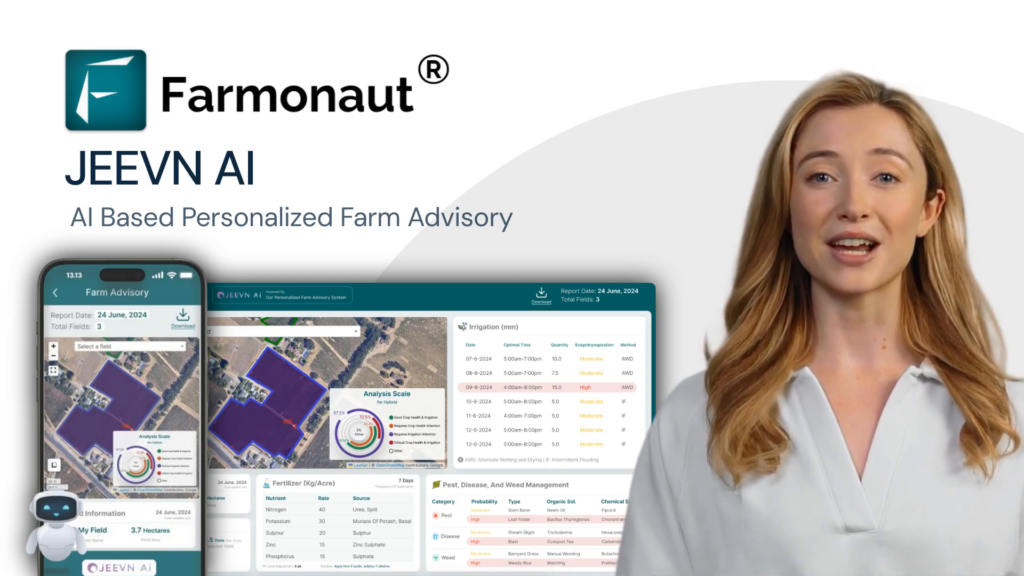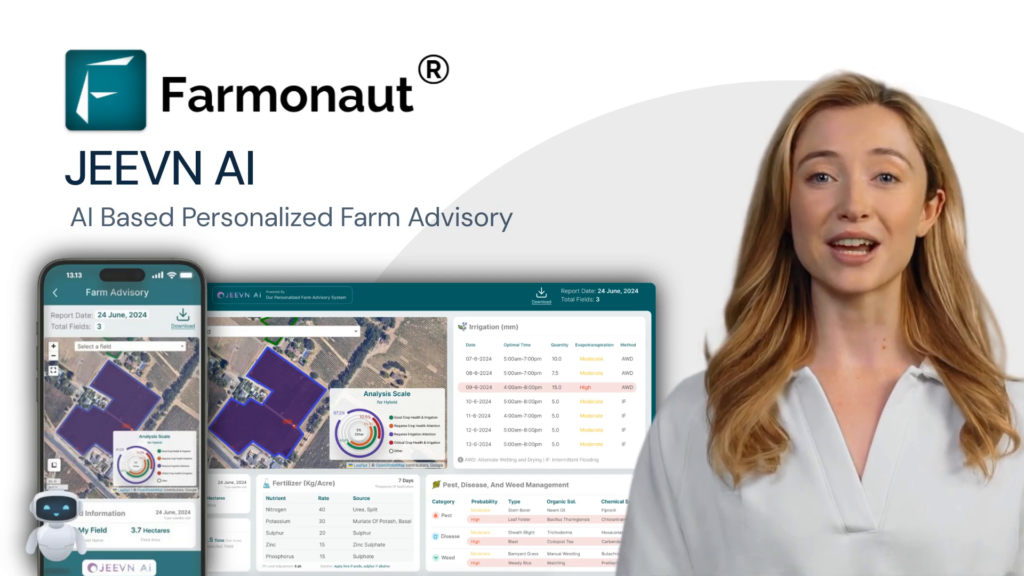Unlocking Texas Wildlife: Exploring Coyote Behavior and Adaptability in Diverse Habitats

“Coyotes can live up to 14 years in the wild and form monogamous partnerships, often mating for life.”
Welcome to our comprehensive exploration of one of Texas’ most fascinating wildlife species – the coyote (Canis latrans). In this blog post, we’ll delve deep into the world of these adaptable canines, uncovering their behaviors, habitats, and the remarkable ways they’ve thrived across the diverse landscapes of Texas and beyond. As we journey through the intricacies of coyote life, we’ll also touch upon how modern technologies, including precision agriculture and satellite crop monitoring, are shaping our understanding of wildlife and their habitats.
The Coyote: A Texas Icon
Coyotes have long been an integral part of Texas wildlife, their haunting howls echoing across the state’s vast and varied terrains. From the arid deserts of West Texas to the lush forests of East Texas, these resourceful animals have carved out a niche in nearly every ecosystem. Their ability to adapt and thrive in diverse habitats makes them a fascinating subject for wildlife enthusiasts, researchers, and conservationists alike.
As we explore the world of coyotes, it’s important to note how our understanding of wildlife habitats has been revolutionized by technology. Just as Farmonaut’s satellite-based farm management solutions provide valuable insights for agriculture, similar technologies are enhancing our knowledge of wildlife patterns and behaviors.
Physical Characteristics of the Coyote
- Size: Typically weighing between 20-50 pounds
- Coat: Varies from grayish-brown to yellowish-gray
- Distinctive features: Bushy, black-tipped tail and pointed ears
- Senses: Exceptional hearing and sense of smell
Coyotes are medium-sized canines, often mistaken for small wolves or large dogs. Their adaptability is reflected in their physical appearance, with coat colors varying slightly to blend with their environment. This adaptability reminds us of how modern farming practices, aided by agricultural drone mapping and remote sensing in agriculture, must also adapt to diverse landscapes.
Habitat Preferences and Adaptability
One of the most remarkable aspects of coyotes is their incredible adaptability to various habitats. In Texas, we find coyotes in:
- Grasslands and prairies
- Forests and woodlands
- Desert scrublands
- Urban and suburban areas
- Agricultural lands
This adaptability showcases the coyote’s resilience and intelligence. They’ve successfully filled ecological niches left by declining wolf populations, demonstrating their opportunistic nature. Similarly, in the world of agriculture, smart irrigation systems and soil health management techniques are helping farmers adapt to diverse and challenging environments.
Coyote Diet and Hunting Behavior
Coyotes are true omnivores, with a diet that varies based on habitat and availability of food sources. Their opportunistic eating habits include:
- Small mammals (rabbits, rodents)
- Birds and their eggs
- Reptiles and amphibians
- Fruits and vegetables
- Carrion
- Occasional livestock or pets (in areas of human-wildlife conflict)
Their hunting techniques are as diverse as their diet. Coyotes may hunt alone for smaller prey or in packs for larger animals. This adaptability in hunting and diet is crucial for their survival across different ecosystems. It’s reminiscent of how modern farmers use farm data analytics to adapt their crop strategies to changing conditions.
Social Structure and Behavior
Coyotes exhibit fascinating social behaviors:
- Family units: Typically consist of an alpha pair and their offspring
- Monogamous partnerships: Often mate for life
- Cooperative hunting: Family groups may hunt together for larger prey
- Territorial behavior: Use vocalizations and scent marking to establish territories
These social structures help coyotes thrive in various environments. Their ability to work cooperatively within family units is key to their success, much like how digital farm management systems help agricultural teams collaborate effectively.

Breeding and Life Cycle
Understanding the coyote’s life cycle is crucial for wildlife management:
- Breeding season: Typically January to March
- Gestation period: About 60-63 days
- Litter size: Average of 4-6 pups
- Pup care: Both parents participate in raising young
- Maturity: Pups reach adult size at about 9 months
- Lifespan: Up to 14 years in the wild, longer in captivity
The coyote’s reproductive cycle is well-adapted to ensure the survival of their species. This cycle of life and growth is not unlike the cycles we observe in agriculture, where crop yield prediction tools help farmers anticipate and plan for each season’s harvest.
Coyotes in Texas Ecosystems
In Texas, coyotes play a significant role in maintaining ecological balance:
- Predator control: Help regulate populations of small mammals
- Scavenging: Clean up carrion, contributing to ecosystem health
- Seed dispersal: Through consumption and excretion of fruits
- Indicator species: Their presence can indicate overall ecosystem health
The role of coyotes in Texas ecosystems is complex and vital. Similarly, in agriculture, understanding the intricate relationships within ecosystems is crucial. Tools like satellite crop monitoring help farmers gain insights into their fields’ health and biodiversity.
“Coyotes have adapted to fill ecological niches in over 49 states, thriving in diverse habitats from deserts to urban areas.”
Coyote Adaptations Across Texas Habitats
| Habitat Type | Physical Adaptations | Behavioral Adaptations | Diet Variations | Population Density | Human Interaction Level |
|---|---|---|---|---|---|
| Grasslands | Lighter coat for camouflage | Open terrain hunting | Small mammals, birds | Moderate | Low to Moderate |
| Forests | Darker coat for forest cover | Stealthy hunting in undergrowth | Varied: mammals, fruits | Low to Moderate | Low |
| Urban Areas | Variable coat colors | Nocturnal activity, garbage foraging | Human food waste, pets | High | High |
| Desert | Lighter, sandy-colored coat | Water conservation, nocturnal habits | Reptiles, rodents | Low | Very Low |
| Agricultural Lands | Varied to match surroundings | Crop field hunting, livestock predation | Crops, rodents, occasionally livestock | Moderate to High | Moderate to High |
This table illustrates the remarkable adaptability of coyotes across different Texas habitats. Their ability to adjust physically and behaviorally to diverse environments is key to their success. In the agricultural sector, we see a similar need for adaptability. Precision agriculture technology allows farmers to adapt their practices to specific field conditions, much like how coyotes adapt to their varied habitats.
Human-Coyote Interactions in Texas
As human populations expand into natural areas, interactions with coyotes become more frequent. In Texas, these interactions can be both positive and negative:
- Urban coyotes: Adapting to city life, sometimes causing concern for pet owners
- Agricultural impacts: Occasional predation on livestock, balanced by rodent control
- Wildlife viewing: Opportunities for nature enthusiasts and photographers
- Educational value: Coyotes serve as subjects for wildlife education programs
Managing human-coyote interactions requires a balanced approach, considering both human needs and wildlife conservation. This balance is similar to how sustainable farming practices aim to meet agricultural needs while preserving natural ecosystems.
Conservation and Management
Conservation efforts for coyotes in Texas focus on maintaining ecological balance:
- Habitat preservation: Protecting diverse ecosystems that support coyote populations
- Education programs: Informing the public about coyote behavior and coexistence strategies
- Research initiatives: Studying coyote populations, behaviors, and impacts on ecosystems
- Conflict mitigation: Developing strategies to reduce human-coyote conflicts in urban and agricultural areas
These conservation efforts require comprehensive data and monitoring, much like how Farmonaut’s satellite-based solutions provide crucial data for agricultural management. The use of technology in wildlife conservation parallels its application in modern farming practices.
The Future of Coyotes in Texas
As we look to the future, several factors will influence coyote populations in Texas:
- Climate change: Potential shifts in habitat and prey availability
- Urban expansion: Increasing human-coyote interactions in developed areas
- Agricultural practices: Changes in land use affecting coyote habitats
- Conservation policies: Evolving approaches to wildlife management
Adapting to these changes will be crucial for both coyotes and humans. In agriculture, tools like crop yield prediction and smart irrigation systems are helping farmers adapt to changing conditions, much like how coyotes must adapt to evolving landscapes.
Conclusion
Our exploration of coyotes in Texas reveals a species that epitomizes adaptability and resilience. From the grasslands to urban jungles, coyotes have proven their ability to thrive in diverse environments. Their complex behaviors, social structures, and ecological roles make them a fascinating subject of study and an integral part of Texas wildlife.
As we continue to share our landscapes with these remarkable animals, it’s crucial to foster understanding and coexistence. The adaptability of coyotes serves as a reminder of the importance of flexibility and innovation in all aspects of life, including agriculture and wildlife management.
Just as coyotes adapt to changing environments, modern agriculture is evolving with technologies like those offered by Farmonaut. From satellite crop monitoring to precision agriculture technology, these tools are helping farmers adapt to changing conditions and manage resources more effectively.
As we move forward, let’s appreciate the coyote’s role in our ecosystems and strive for balanced approaches that allow both wildlife and human communities to thrive. By understanding and respecting the natural world around us, we can work towards a future where humans and wildlife coexist harmoniously in the diverse landscapes of Texas and beyond.
FAQs About Coyotes in Texas
- Are coyotes dangerous to humans?
Generally, coyotes avoid human contact. Attacks on humans are rare, but it’s important to keep a safe distance and not feed them. - How can I protect my pets from coyotes?
Keep pets indoors at night, supervise them outdoors, and remove attractants like pet food from your yard. - What should I do if I encounter a coyote?
Make noise, appear large, and slowly back away. Never run from a coyote. - Are coyotes protected in Texas?
Coyotes are not protected in Texas and can be hunted year-round, but local regulations may vary. - How do coyotes benefit the ecosystem?
Coyotes help control rodent populations, clean up carrion, and contribute to overall biodiversity.
For more information on wildlife management and conservation efforts in Texas, visit the Texas Parks and Wildlife Department website.
For developers interested in integrating agricultural data into their applications, check out the Farmonaut API and the API Developer Docs.















